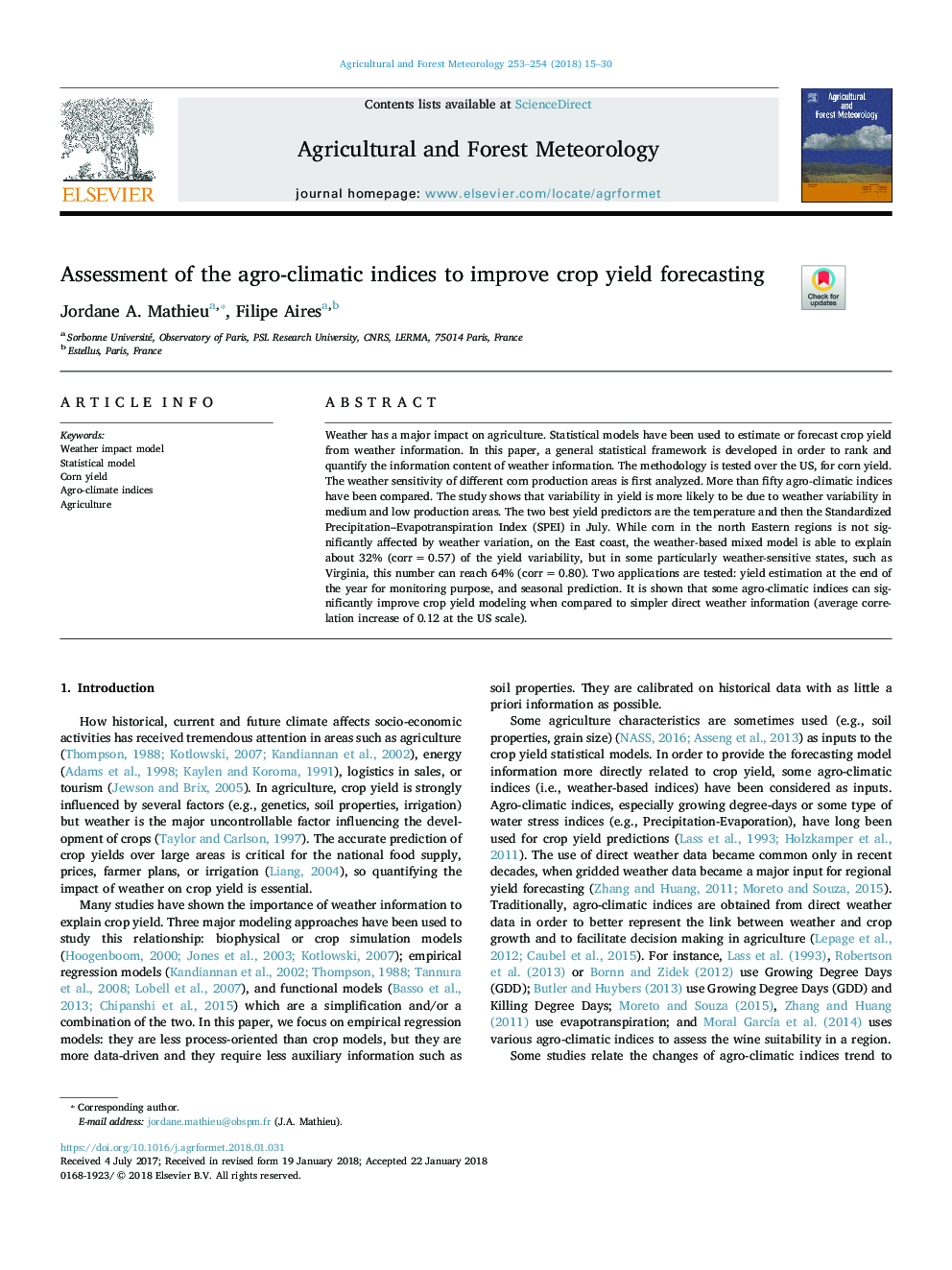| Article ID | Journal | Published Year | Pages | File Type |
|---|---|---|---|---|
| 6536734 | Agricultural and Forest Meteorology | 2018 | 16 Pages |
Abstract
Weather has a major impact on agriculture. Statistical models have been used to estimate or forecast crop yield from weather information. In this paper, a general statistical framework is developed in order to rank and quantify the information content of weather information. The methodology is tested over the US, for corn yield. The weather sensitivity of different corn production areas is first analyzed. More than fifty agro-climatic indices have been compared. The study shows that variability in yield is more likely to be due to weather variability in medium and low production areas. The two best yield predictors are the temperature and then the Standardized Precipitation-Evapotranspiration Index (SPEI) in July. While corn in the north Eastern regions is not significantly affected by weather variation, on the East coast, the weather-based mixed model is able to explain about 32% (corrâ¯=â¯0.57) of the yield variability, but in some particularly weather-sensitive states, such as Virginia, this number can reach 64% (corrâ¯=â¯0.80). Two applications are tested: yield estimation at the end of the year for monitoring purpose, and seasonal prediction. It is shown that some agro-climatic indices can significantly improve crop yield modeling when compared to simpler direct weather information (average correlation increase of 0.12 at the US scale).
Related Topics
Physical Sciences and Engineering
Earth and Planetary Sciences
Atmospheric Science
Authors
Jordane A. Mathieu, Filipe Aires,
